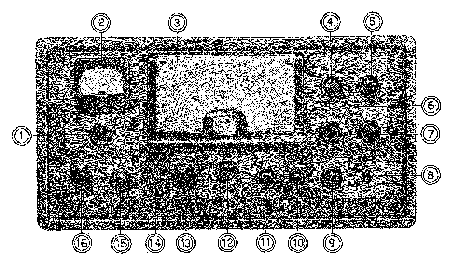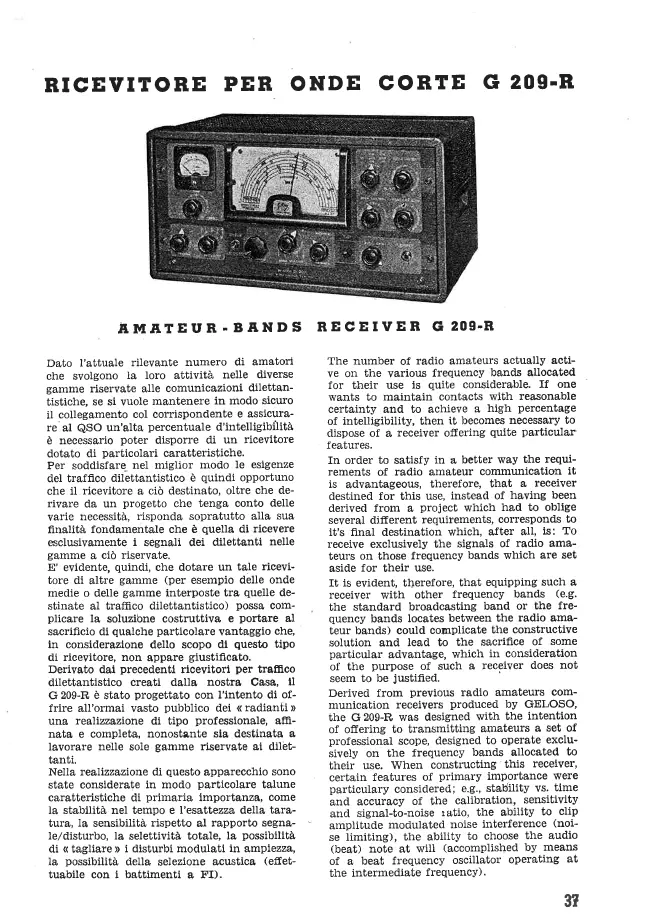Geloso - G 209 - Receiver
Manufacturer:

Image 1 of 3
If you have any other photos or manuals for the
Geloso G 209
you can
upload the files here.
Equipment:
G 209
Date:
1961
Category:
Group:
Sub Group:
Information
The number of radio amateurs actually active on the various
frequency bands allocated for their use is quite
considerable. If one wants to maintain contacts with
reasonable certainty and to achieve a high percentage of
intelligibility, then it becomes necessary to dispose of a
receiver offering quite particular features.
In order to satisfy in a better way the requirements of
radio amateur communication it is advantageous, therefore,
that a receiver destined for this use, instead of having
been derived from a project which had to oblige several
different requirements, corresponds to it’s final
destination which, after all, is: To receive exclusively the
signals of radio amateurs on those frequency bands which are
set aside for their use.
It is evident, therefore, that equipping such a receiver
with other frequency bands (e.g. the standard broadcasting
band or the frequency bands locates between the radio
amateur bands) could complicate the constructive solution
and lead to the sacrifice of some particular advantage,
which in consideration of the purpose of such a receiver
does not seem to be justified.
Derived from previous radio amateurs communication receivers
produced by GELOSO, the G 209-R was designed with the
intention of offering to transmitting amateurs a set of
professional scope, designed to operate exclusively on the
frequency bands allocated to their use. When constructing
this receiver, certain features of primary importance were
particulary considered; e.g., stability vs. time and
accuracy of the calibration, sensitivity and signal-to-noise
latio, the ability to clip amplitude modulated noise
interference (noise limiting), the ability to choose the
audio (beat) note at will (accomplished by means of a beat
frequency oscillator operating at the intermediate frequency).
In addition to that, this receiver is capable of receiving
amplitude modulated signals and c.w. signals as well as
single-side-band-sup-pressed-carrier (s.s.b.) signals.
In the following chapter ail principal technical features
are listed (with figures).
1 Manual
Service and user manual
Manual type:
Service and user manual
Pages:
23
Size:
3.1 MB
Language:
english, italian
Revision:
Manual-ID:
Date:
January 1961
Quality:
Scanned document, all readable.
Upload date:
April 23, 2017
MD5:
1fdf0f90-4439-3110-006b-44a891aff022
Downloads:
589
